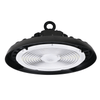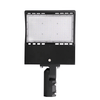How many lumens do an LED light bulb need to replace traditional lights?

How do LEDs work?
Unlike traditional incandescent bulbs, LEDs don’t have filaments inside that heat in order to glow the bulb. The LED bulb has a P-N arrangement of two side assortment where the one side contains positive electrons and the other side has negative charge. When the current flows on these sides in a certain amount of voltage, both charges combine together to release energy in the form of light. Thus, the light we witness coming out of the bulb is LED light.
Why LEDs are recommended?
LEDs are a significant lighting option that offers illumination with several perks like energy savings, longevity, environmental friendliness, and several other benefits. Choosing LEDs over traditional lighting fixtures is an excellent option to make as they don’t emit excessive heat while glowing, consume less energy, possess sufficient wattage equivalency, etcetera. Although, LED bulbs are quite expensive than CFLs and incandescent bulbs their benefits make the spending worth it.
With numerous options available in LED lights, you can choose these bulbs for almost all your desired locations. The illumination that the bulbs offer is excellent and the light has an effective reach too.
Terms used in LED lights

What is Lumens?
The light output capacity of a bulb is known as lumens. Ensuring the lumens prior to buying a bulb is a must. You need to figure out how many lumens are actually required for your location, after that find the suitable watt fixture.
What is a foot candle power (Fc)?
The SI unit of the luminous intensity is known as foot candle. The measurement is used to evaluate the lumens that reach the surface per unit area with a particular light source.
What is Kelvin?
Used to measure the CTT (correlated color temperature) of a light, Kelvin is the unit that states the temperature of the color appearance of the light. In terms of LED lights, this color temperature gives you a clear idea of how light’s color is going to disperse in the environment. The color temperature of light may vary in several temperatures.

2700K-3500K - Soft/warm white light
A soft or warm white light has a yellowish appeal.
3500K-4500K - Natural white
An off-white shade of light appears from these color temperatures. The light has a mild yellow effect.
5000K - Daylight white
The light emits a slightly blue color in a daylight white color temperature range. Generally applicable for wider outdoor spaces, the light can aptly ensure visibility in the area.
5500K - 6000K - Cool white
The intensity of appearing blue shade in these color temperatures is comparatively higher. The light is not recommended for household purposes as it is a commercial standard color temperature.
The more color temperature an LED light posses, the wider the area of application needs to be. For instance, the warm white light temperature is ideal for household purposes, but the daylight white or cool white light temperatures are preferred for wider outdoor applications like parking lots, streets, alleys, gardens, etcetera.
The popular color temperature amongst LED parking lot lights and LED pole lights is 5700K which is sufficient to deliver illumination between the daylight and cool white lite context.
What is CRI?

CRI stands for color rendering index that shows how the objects appear in human eyes in the presence of light. The spectrum indicates the effect of light and how well the light is capable of presenting objects in their natural/actual colors.
LED parking lot lights and LED pole lights are some efficient outdoor lighting fixtures that are needs to be high illuminating. Thus, their CRI is supposedly more as it ensures that the light is ensuring proper visibility during the dark.
What is Lumen efficiency?
Measured in Lumens per Watt, the lumen efficiency indicates how efficiently the light source is dispersing its illumination. For instance, the luminous efficiency of a 100 Watt bulb that has a lumens power of 1500 lumens will be 15 Lumens per Watt (1500/100 = 15).
What is 0-10v dimming?

0-10v dimming is a feature that ensures that the LED light is capable of performing the 3-step dimming function. In this function, you can adjust the brightness of the light according to your preference and the location’s demand. This dimming allows you to save energy and saves you a lot.
The origin of LEDs
What is an LED?
LED refers to light emitting diodes. These are the tiny chips on a semiconductor strip or plate from which the current flows in order to glow the tiny chips or bulbs.
What is a light emitting diode?
As explained earlier, light emitting diodes are the tiny bulbs on a semiconductor chip that glows when current flows through them. Due to their nature as diodes on circuit board, they need relentless power to let the ac power current convert into dc power.




















































































